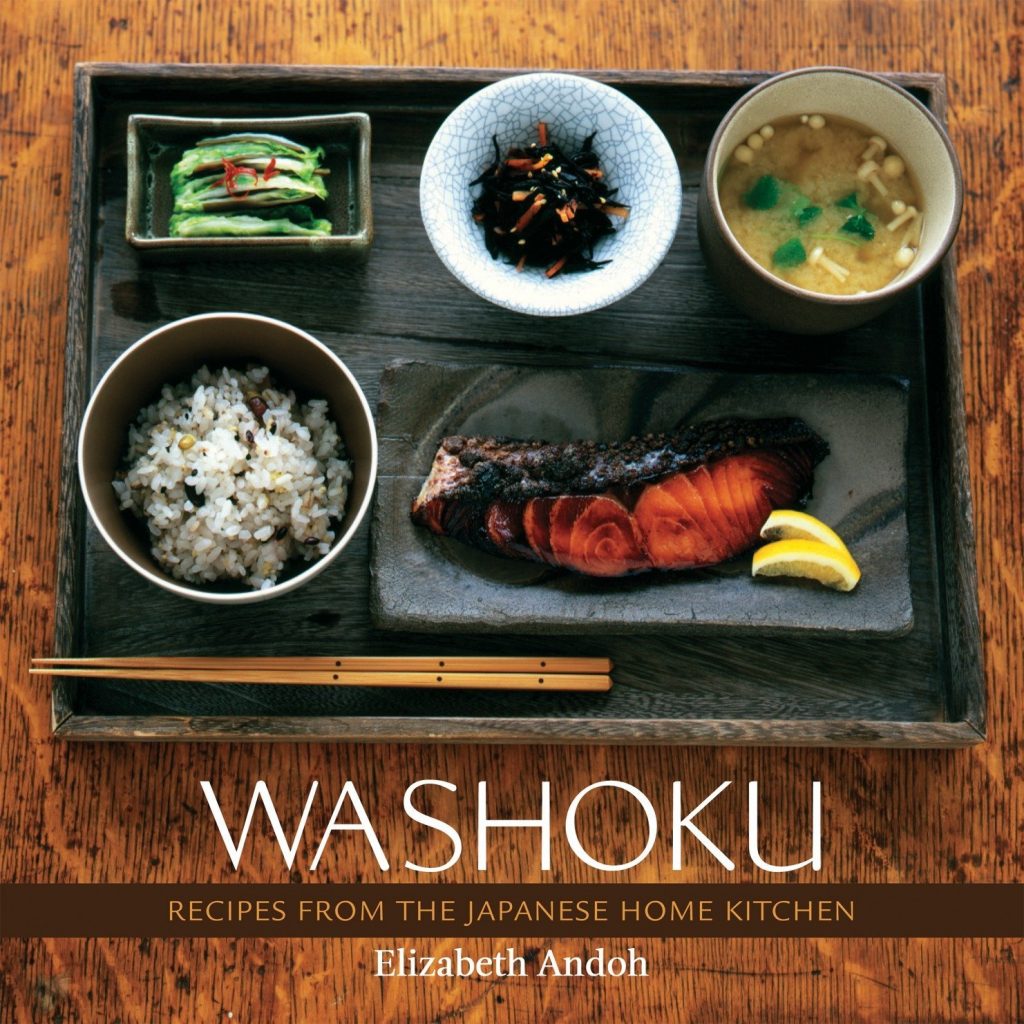Washoku by Elizabeth Andoh, a book about the traditional Japanese cooking

You know my obsession and passion for Japanese cuisine. It is my husband’s fault because he is the one who introduced me to this cuisine when we lived in Paris, in what seems to be another life today.
You also know my passion for books, including cookbooks. This one had been on my list for quite some time, and I finally found an excuse to buy it.
Washoku is written by Elizabeth Andoh. An American woman who has lived in Japan for decades, she married a Japanese man and learned everything there. She is an institution in Tokyo, where she gives Japanese cooking classes in English at her school A Taste Of Culture (you suspect that the day we go to Tokyo, I MUST go there to take one of her courses).
For me (and this is only my humble opinion), this book is a masterpiece and is indispensable for anyone interested in the roots of Japanese cuisine and its very essence. This book is for you.
In addition to explaining in detail and very simply the fundamental principles of washoku cooking, she also explains how to apply them at home. It contains about 140 recipes, each with a few more tips. For example. how to harmonize a meal with the recipe. In addition, the photos are sumptuous (I do not know what it is for you, but for me, a cookbook must have good illustrations; not necessarily photos, even drawings for example, but it is something essential in my choices of purchase).
This book has won several awards.
But what is “washoku”?
In Japanese, “washoku” refers to the purely traditional cuisine of Japan; it literally means “the harmony of food”, but it’s quite a philosophy. Elizabeth Andoh says “[washoku] is a way of thinking about what we eat and how it feeds us. The term describes both a culinary philosophy and the simple and nutritionally balanced way of preparing it in this spirit. “
The five principles of Washoku
In fact, “Washoku” is a term that contrasts with the term “yoshoku“, which refers to dishes inspired by Western cuisine. These principles describe “how to succeed in cooking dishes with nutritional balance and aesthetic harmony for meals”.
There are five principles of washoku:
- Colors (goshiki): each dish should include foods of red, yellow, green, black (very dark colors such as eggplant or mushrooms count as black) and white. This ensures a nutritional balance of vitamins and minerals in the meal.
- Tastes (gomi): this refers to the balance of flavors (salty, acidic, sweet, bitter and spicy) to ensure that the palate is “pleasantly stimulated without being overwhelmed”.
- Preparations (gohō): each dish should use several cooking methods (such as simmering, steaming, grilling etc.) in order to avoid overconsumption of salt, sugar and fat (and therefore consume too many calories)
- Senses (gokan): this advises the cook to take care not only of the taste but also of the other four senses (sight, sound, smell, and touch *texture, in this case*).
- Perspectives (gokan mon): these rules are more abstracts. They teach us to always think about the people involved in growing, raising and harvesting what we eat. But also, not to forget to be grateful for the person (or persons) who prepared the meal.
Of course, other Asian countries also apply these kinds of principles in their culture.
Moreover, Elizabeth Andoh gives us tips on how to apply this at home. She advises choosing seasonal food, if possible local and that comes from the land as well as the sea. It must also be attractive to all our senses. It sounds very “current” doesn’t it?
Obviously, I will not copy the whole book here, so I advise you to enjoy it for yourself.